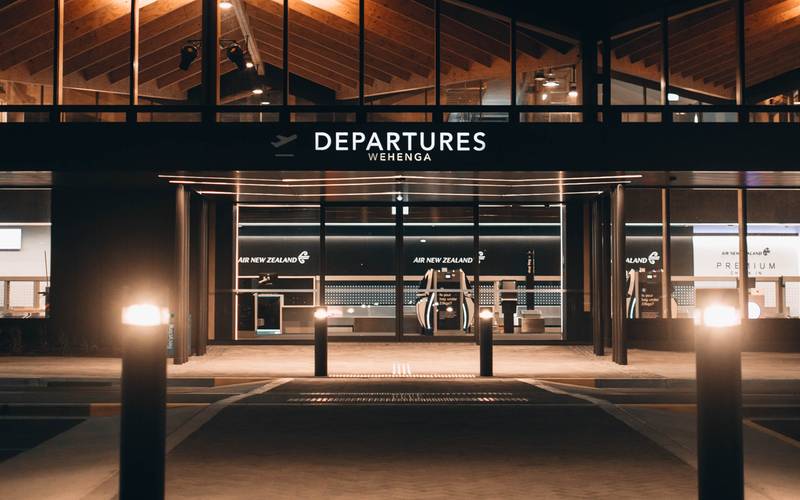How is Australia preparing for reopening to the world?
In the last few days, we’ve seen some loosening of the coronavirus restrictions, and although international borders remain closed with no set date of re-opening, the Australian Government is taking further steps to prepare for the safe opening of global travels and adding new travel exemptions for those who travel from New Zealand to Australia.
- New Zealand Safe Travel Zone
Additional to the list of people who are automatically excluded from travel restrictions and can enter to the country without applying for a travel exemption, such as Australian citizens, permanent residents and their immediate family, among others, the Government has established a Safe Travel Zone with New Zealand. This new Safe Travel Zone means all passengers from New Zealand will be able to travel to Australia quarantine-free and without needing a travel exemption, if they have not been in an area designated as a COVID-19 hotspot in the preceding 14 days.
However, Australian citizens or permanent residents are not allowed to leave Australia due to the restrictions, unless they have an exemption and they will be subject to New Zealand entry requirements.
- Digital Incoming Passenger Cards
Australia has strict border measures in place, limited flights to and from the country and despite no clear plan on when they are going to re-open international borders, the Government is already preparing strategies for when international travel starts operating again. It has announced a new digital system to collect information from incoming travellers via their mobile devices or computers.
The new Digital Passenger Declaration (DPD) will replace the current paper cards, which are scanned and processed manually, to facilitate information being collected and shared more efficiently, as well as tracing contact details accurately to control the virus.
This easier, quicker, and more secure alternative will also allow COVID vaccination certificates to be digitally uploaded and connected when they become available. Furthermore, the Department of Home Affairs is also working in a simple digital visa that would be integrated into the system.
With these new alternatives, when the Government decides to re-open international borders, it will do so safely and responsibly.
Update 10 September 2020:
More inbound travel exemptions announced for Australia
The Department of Home Affairs has added additional categories to the list of people who are automatically exempt from travel restrictions and can enter Australia without applying for a travel exemption.
The addition of the Business Innovation and Investment (subclass 188) visa to the list of travel exemptions permitted demonstrates the focus on business and investment migration from the Government to contribute to Australia’s economic recovery.
According to The Department’s website, you are automatically exempt from the travel restrictions and can enter Australia (without obtaining an individual exemption) if you are:
- an Australian citizen
- a permanent resident of Australia
- an immediate family member of an Australian citizen or permanent resident*
- a New Zealand citizen usually resident in Australia and their immediate family members
- a diplomat accredited to Australia (holding a subclass 995 visa)
- a traveller transiting Australia for 72 hours or less
- airline crew
- maritime crew including marine pilots
- recruited under the Government approved Seasonal Worker Program or Pacific Labour Scheme
- holder of a Business Innovation and Investment (subclass 188) visa
Find out more about the business and investment pathways to immigration here.
Travel waiver update 6 August 2020:
As the border restrictions remain in place in Australia, entering and exiting the country has never been more difficult.
If you’re not an Australian citizen or permanent resident you cannot automatically enter the country, and if you are an Australian citizen or permanent resident you cannot automatically leave the country.
If you believe you have a valid reason that meets the strict list of criteria to permit you leave or enter Australia you must apply for a travel ban exemption. But this is not necessarily an easy process.
By 22 June 2020 the Department of Home Affairs has received almost 40,000 travel exemption requests form people looking to enter Australia, and almost 33,000 requests form Australians looking to leave the country.
Of those applications only a fraction have been approved. Under Freedom Of Information Home Affairs have also released the number of approved travel exemption requests. Between 25 March 2020 and 22 June 2020 a total of 10,004 of the approximate 33,000 applications to depart Australia have been approved.
For travel exemption requests to enter Australia, roughly 40,000 applications have been submitted with only 10,440 being approved between February 202 and June 2020. Of the approvals, 6,681 applications were transits which leaves only 3,759 approved to enter and remain in Australia.
You can read the full breakdown of approved exemptions here.
The difficulty to be approved for travel exemption ban to enter Australia is clear. If you’re considering applying for a travel ban exemption we’d suggest getting in touch with our team who have been processing a number of travel ban exemptions throughout the border closures.
You can also watch our Senior Migration Agents discussing applying for a travel ban exemption on Facebook here.
Update 16 July 2020:
With the strict border closures in Australia, many visa holders who built lives in Australia found themselves on the wrong side of the border as the restrictions came into force.
Not only is it almost impossible to enter Australia if you aren’t an Australian citizen or permanent resident but it’s also extremely difficult to leave the country even if you are a permanent resident.
Who is allowed to leave and how can you apply for an exemption to the travel ban?
The only people who do not need permission to depart Australia with the current travel ban are those who ‘ordinarily reside’ in a country outside Australia.
The Department of Home Affairs considers someone as ordinarily residing in a country other than Australia if international movement records show that you’ve spent more time outside Australia than inside for the last 12 to 24 months.
If you want to travel and you are not considered to ordinarily reside outside of Australia you will need to provide evidence to show that you meet one of the criteria that would permit you to be exempt from the current travel ban.
Travelling to Australia
There are only two reasons for which you will be allowed to enter Australia:
- You are an Australian citizen or permanent resident returning
- You are an immediate family member of an Australian citizen or permanent resident (spouse, de facto partner, dependent children and legal guardians)
- You have a compelling or compassionate reason to travel to Australia urgently
Leaving Australia
If you are an Australian citizen, permanent resident or ordinarily reside in Australia and wish to leave Australia you must meet at least one of the following criteria:
- Your travel is as part of the response to the COVID-19 outbreak, including the provision of aid
- Your travel is essential for the conduct of critical industries and business (including export and import industries)
- You are travelling to receive urgent medical treatment that is not available in Australia
- You are travelling on urgent and unavoidable personal business
- You are travelling on compassionate or humanitarian grounds
- Your travel is in the national interest
Even if you believe you meet this criteria you will still need to apply for a travel ban exemption.
Non-citizens are permitted to leave Australia without a travel exemption.
Temporary visa holders also do not need a travel exemption to leave Australia, but they should note that if they depart Australia and wish to return they will need a travel exemption to be allowed to re-enter Australia.







